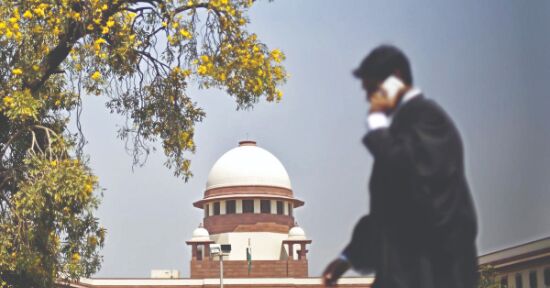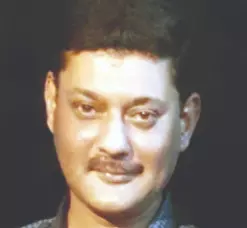Cracking the Whip
For a fourth time running, the Supreme Court has expressed its strong displeasure over the issue of continuing custodial irregularities and interrogation in India, and non-compliance with its remedial orders. Referring to previous directives, the SC has again ordered the installation of CCTVs in the offices of every probe agency

Judgment Day 1 was on April 3, 2018. After hearing a case of false implication and torture of a bus conductor in Gurugram by the police, the Supreme Court ordered the immediate installation of Closed-Circuit Television (CCTV) equipment in police stations across the country. The Supreme Court's landmark order came after the Central Bureau of Investigation (CBI), which had been handed over the case after initial enquiries by the Gurugram Police (which had implicated the accused on all counts), gave the accused a clean chit and recommended his immediate release as there was no evidence against him.
Come September 2020, Judgment Day 2… Two years after the Supreme Court directed installation of CCTVs in police stations across the country, a three-judge bench issued orders to Chief Secretaries of all states and Union territories to inform the progress on affidavits before November 24. "The Registry (of the Supreme Court) is directed to issue notices to the Chief Secretary of each State and Union Territory to respond on the following: What is the position with respect to CCTV cameras fitted in each and every Police Station? What is the position qua the constitution of Oversight Committees in accordance with our order dated April 3, 2018," asked a bench of Justices RF Nariman, Navin Sinha and Indira Banerjee.
Judgment Day 3
Come December 2, 2020, and the apex court asked for an update on its order on the installation of CCTV cameras in all police stations. It also further extended the order to include the offices of all investigating agencies—the Central Bureau of Investigation, National Investigation Agency, Enforcement Directorate, Narcotics Control Bureau, Department of Revenue Intelligence, Serious Fraud Investigation Office, and any other agency that carries out interrogations and has the power of arrest.
This ruling added that the CCTVs should cover interrogation rooms, lock-ups, entries and exits. "Most of these agencies carry out interrogation in their office(s), so CCTVs shall be compulsorily installed in all offices where such interrogation and holding of the accused takes place in the same manner as it would in a police station," the SC observed. "These cameras must be installed at entry and exit points of the police station, lock ups, corridors, lobbies, reception area, outside washrooms, rooms of the sub-Inspector and Inspector."
The dragging of feet
And finally came March 2, 2021, Judgment Day 4. Last week, the Supreme Court expressed its strong displeasure with the authorities for "dragging its feet" and seeking more time for the installation of CCTV cameras in the offices of investigating agencies. The bench headed by Justice RF Nariman observed that this issue was one that concerned the rights of all citizens and said it is would not accept the excuses given in a letter filed by the authorities, which also sought an adjournment in the matter.
"We are getting a distinct impression that you are dragging your feet," the bench, also comprising Justices BR Gavai and Hrishikesh Roy, told Solicitor General Tushar Mehta who was representing the Centre. During the hearing, Mehta informed the bench that adjournment was being sought as the matter may have ramifications. "This concerns the rights of citizens. We are not accepting excuses. We are not concerned about the ramifications," the Supreme Court said. The apex court also asked Mehta about the allocation of funds for installation of CCTVs in the offices of these investigating agencies.
Further, video and audio recordings would have to be retained for 18 months for evidence (purposes), if needed. An independent panel can periodically ask for the recordings to check and monitor any human rights violations. States have been asked to file an action plan with timelines to comply with the order within six weeks. The SC also said its directions were in keeping with Article 21 of the Indian Constitution on the Fundamental Right to Protection of Life and Personal Liberty.
Little on-ground progress
In a previous column, I had written on how the Supreme Court, in 2018, had heard another case
of custodial torture in Punjab and discovered shortly after that there were no security cameras installed in the offices to ascertain what really transpired inside the rooms. Inflamed, the Supreme Court erupted. "Nothing substantial has been done for over two-and-a-half years after the Supreme Court passed orders."
The consequences are being felt now. The Supreme Court has asked states to assign funds for CCTVs and requisite infrastructure in their premises right away, or else. Human rights courts are also to be set up in each district to hear complaints of torture in custody. Lack of police reforms, absence of laws to check police torture and inadequate grievance mechanisms are some of the reasons why custodial torture and deaths continue unabated in the country.
The Supreme Court order comes a few months after the CBI admitted that a man and his son who died after their arrest for violating the Coronavirus lockdown were tortured by policemen at Sathankulam in Tamil Nadu, largely due to policemen who "wanted to teach them a lesson". There were nationwide calls for justice after Jeyaraj (59 years old) and his son Benniks (31 years old) were thrashed so badly that they died. And tellingly, all audio and video details of their ordeal were erased.
Accountability is crucial
The ruling that CCTV cameras be installed in the offices of all investigating agencies is a major step towards accountability amongst investigative agencies. The apex court ruling also says CCTV recordings should be readily made available to anyone who complains of custodial torture and human rights violation(s). The ruling will go a long way in ushering in transparency and openness to the offices of the agencies where suspects are regularly questioned. We frequently read reports of alleged irregularities and police excesses.
What is the status update today, two years-plus after the SC order? Well, till November 2020, only 14 Indian states had filed Compliance Affidavits and Action-Taken Reports on the exact position of
the CCTV camera installation in their police stations. It is because of this reason that the Supreme Court has now cracked the proverbial whip.
However, let's step back for a bit and not blame only the executive and police personnel for the continued excesses being meted out to many innocents and some not-so-innocents. The wheels of justice move excruciatingly slowly in India and judicial reforms are also needed for prompt disposal of ongoing cases. For when cases linger, the slaughter of human dignity prevails.
For instance, the case of labor rights activist Nodeep Kaur, who was granted bail by the Punjab and Haryana High Court last month. According to a medical report submitted to the court on the day of her release, Nodeep "seems to have been beaten up in custody by the Haryana Police following her arrest on 12 January". Doctors who examined her at Sonepat Civil Hospital on January 25 this year, 13 days after her arrest, found bruises on various parts of her body.
And let's not even go to Rhea Chakraborty and what she went through after the passing of Sushant Singh Rajput, which later turned out to be a case of suicide.
Decision welcomed
The Human Rights Forum has repeatedly welcomed the Supreme Court's directive to install CCTVs and recording facilities. Rightly so, since this is a far-reaching order that, if implemented properly, will go a long way in reducing custodial violence and human rights abuses, ensuring accountability. Also, the order reflects judicial vigilance against custodial excesses. Some may argue that it is a Utopian step that thrives for its own fulfillment, and that we need much more. But any beginning is welcome, for unfortunately, custodial torture is an Indian reality. So is custody as a means of torture. The quality of any democracy is tested as vigorously on the streets and in Parliament as it is inside prisons.
I did some research and came up with this—Article 20(3) of the Indian Constitution guarantees every citizen the fundamental right to not be compelled to be a witness against himself. Neither is the cardinal right to life and personal liberty, "except according to procedure established by law", under Article 21. These two inalienable guaranteed constitutional rights, when read with Section 438(1)(iv) of the Code of Criminal Procedure (CrPC) which factors in accusations made with the object of injuring or humiliating a person by having him arrested.
Jinee Lokaneeta, who teaches political science at New Jersey's Drew University, wrote a book last year on custodial interrogation, titled 'The Truth Machines: Policing, Violence, and Scientific Interrogations in India'. In it, she writes: "As per the Indian legal system, once you arrest someone, within 24 hours of his arrest, maximum, he has to be produced before a court. So after his arrest, the police is expected to complete the investigation and interrogation within 24 hours." But in practicality, she writes, they get only 12-14 hours with the accused before he's (to be) produced. This makes it difficult for the police to go by the rule book. So, we have custodial interrogation and the use of less-than-humane and ideal means to obtain information.
It is a paradox that torture by the authorities continues in our country. And that the age-old cliché is still quoted: "Let the law take its course…" Sure, let's do that, but who decides and monitors that course?
The writer is a communications consultant and clinical analyst. [email protected]



